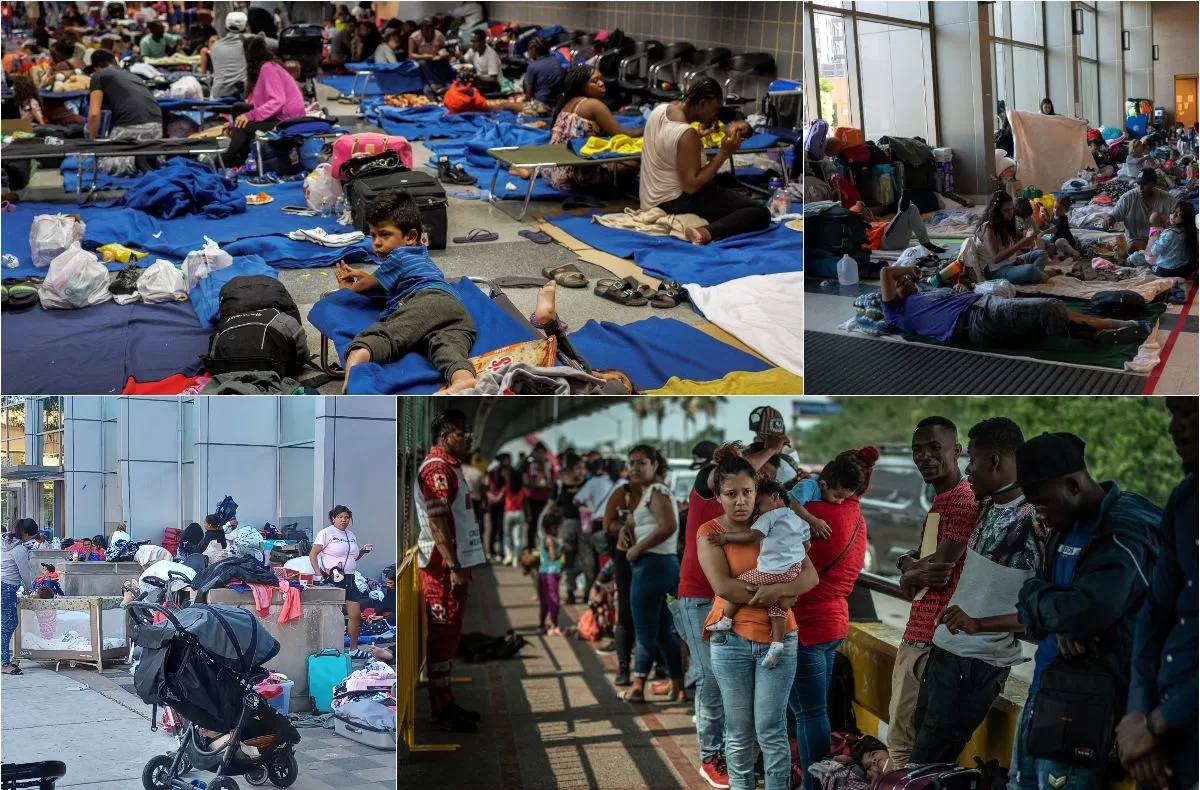As of October 5, 2023, more than 17,000 migrants have arrived in Chicago since August 2022. The number is expected to grow, with Illinois Gov. J.B. Pritzker being told to prepare for up to 25 buses full of migrants each day.
Most of the migrants have come from Texas, largely under the direction of Republican Gov. Greg Abbott. Abbott continues to protest the Biden administration’s immigration policy by sending migrants to self-proclaimed sanctuary cities.
Chicago has struggled to find housing for the migrants. Currently, more than 9,200 are in city shelters. There are 2,093 still awaiting placement, and 1,730 are sleeping in Chicago police stations.
The migrants are coming from:
- Venezuela
- Other South American countries
Many migrants are from Venezuela, where a political, social and economic crisis in the past decade has pushed millions of people into poverty. At least 7.3 million have left, with many risking an often-harrowing route to the United States.
The vast majority who fled settled in neighboring countries in Latin America, but many began coming to the United States in the last three years.
The buses full of migrants being sent to Illinois and Chicago, however, have largely come from Texas under the direction of Republican Gov. Greg Abbott.
As of Oct. 5, more than 17,000 have arrived in the city since August 2022, according to a spokeswoman for Chicago’s Office of Emergency Management and Communications.
But that number is expected to grow. Illinois Gov. J.B. Pritzker was told this week to prepare for up to 25 buses full of migrants each day.
The governor said the warning came from Texas, which has been busing migrants to Chicago, a designated sanctuary city, for several months. Beatriz Ponce de León, the deputy mayor of immigrant, migrant and refugee rights in Chicago, also reported similar guidance, noting that the buses could potentially bring in 1,250 migrants a day.
The 25 daily buses would mark a dramatic increase compared to the totals reported by Chicago so far, more than doubling the numbers arriving in a single day.
“We were informed that basically Gov. Abbott was no longer going to respect our curfew of not sending buses between the hours of 10 p.m. and 6 a.m.,” Chicago Mayor Brandon Johnson’s Deputy Chief of Staff Cristina Pacione-Zayas said Thursday.
“So the intention would be to increase not just the hours of reception, but then also the number of buses. He started this whole mission with like about 100 buses in the fleet and he has increased capacity to 120 buses, as well as staffing. And the goal is to get up to 150 buses. That’s where we were getting the estimations that we can expect anywhere between 20 to 25 buses daily, 24-seven.”
“In addition,” Pacione-Zayas said, “El Paso has started to send buses. They have actually started their own contract with a busing company, separate and apart from the governor. And they also have explained to us that they would be sending one to three buses a day.” Chicago, like New York and other cities, has struggled to find housing.
The city has been slowly moving people out of temporary spaces and into shelters and, in the near future, tents. Some migrants stay at Chicago’s O’Hare Airport for weeks, then are moved to police stations or manage to get into the few shelters available. Within weeks, Chicago plans to roll out winterized tents, something New York has also done.
As more migrants arrive, the city’s existing services have been strained. Officials have struggled to find longer-term housing solutions while saying the city needed more help from the state and federal governments.
As of 8 a.m. on Thursday, more than 10,000 residents are in city shelters, with another 3,199 migrants awaiting placement, according to Chicago’s Office of Emergency Management and Communications.
Tensions over Chicago’s migrant crisis continue to rise as 22 more buses of asylum-seeking migrants arrived in the city on Wednesday.
The housing of migrants has sparked controversy in a number of Chicago neighborhoods.
South Shore residents have re-filed a lawsuit that aims to stop the city from housing asylum-seekers in public buildings such as police stations and schools.
The lawsuit, filed Sept. 26 by Natasha Dunn, Jimmy Darnell Jones and other residents, seeks wider relief in addition to their initial case filed in May which sought to stop the former South Shore High School from being turned into a shelter for migrants. It names the city of Chicago, Johnson and Chicago Public Schools as defendants.
The residents voluntarily dropped the first lawsuit after learning the former high school wouldn’t be used to house asylum-seekers. But after hearing that thousands of migrants would continue to be sent to Chicago, the South Shore residents filed a broader lawsuit in Cook County circuit court, said Frank Avila, an attorney representing the residents.
At a community meeting on Monday, some Pilsen residents welcomed the opening of a new temporary shelter for asylum-seekers in the neighborhood, but others wondered why the city wasn’t first helping homeowners in the area lower their property taxes. The warehouse, at 2241 S. Halsted, was expected to start receiving migrants as soon as Tuesday.
About 400 migrants, comprised of families with children, will be housed in the neighborhood’s first city-run shelter during the initial phase, according to a fact sheet given out to meeting attendees. Up to 1,000 migrants could be housed during a second phase, city officials said.
“What we are doing here is saving lives,” local Ald. Byron Sigcho-Lopez (25th) told the hundreds gathered at Benito Juarez Community Academy’s auditorium about the new shelter, pointing out that many migrants are forced to stay in cramped conditions at police stations across the city.
Many residents of the neighborhood — which has a sizable immigrant population — sympathized with the plight of the recent arrivals, but they wondered why immigrants who have been here for years aren’t receiving the same levels of help.
In the Austin neighborhood, a Tuesday community meeting was planned ahead of a shelter the city is set to open in Amundsen Park.




